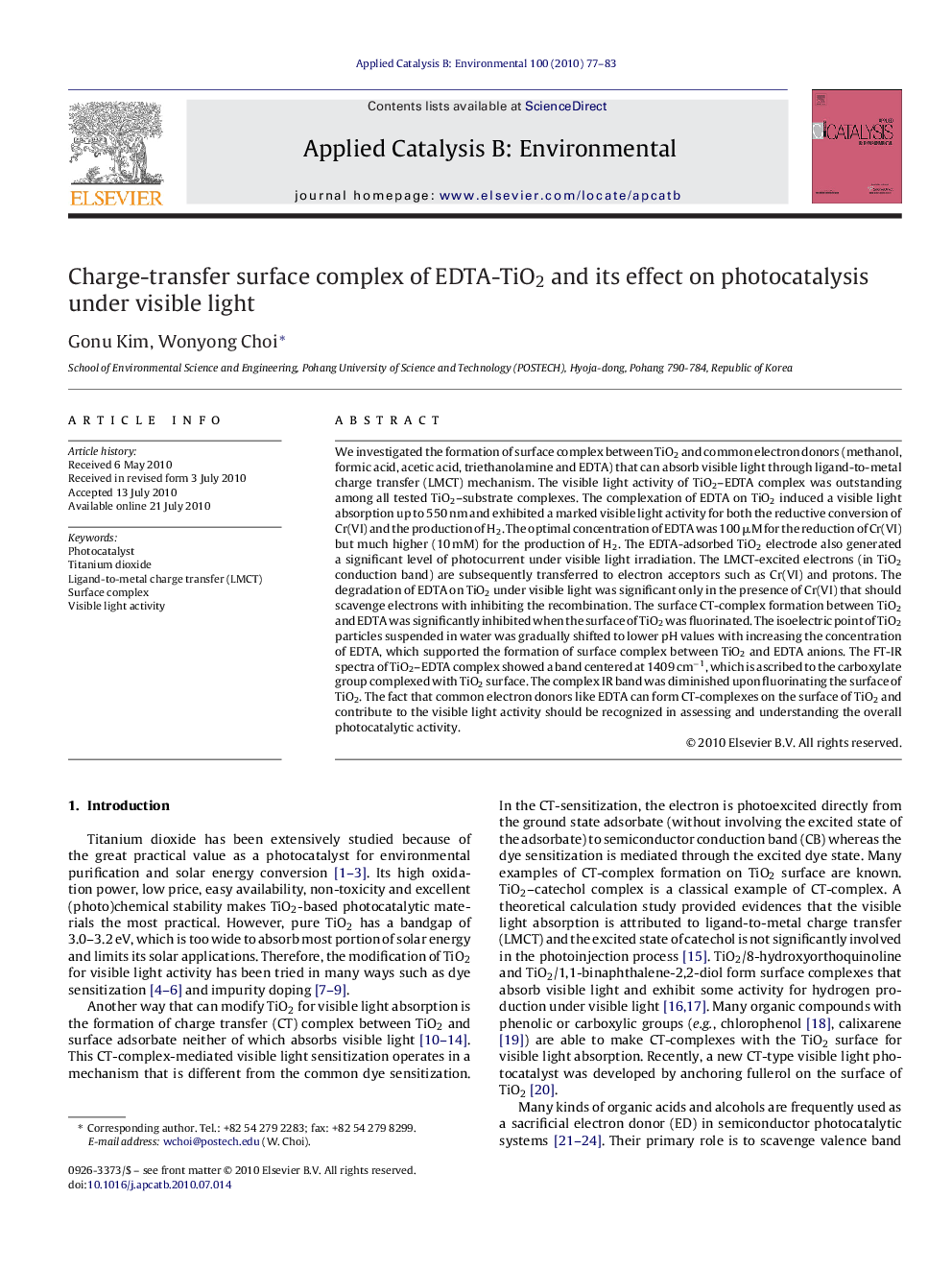| کد مقاله | کد نشریه | سال انتشار | مقاله انگلیسی | نسخه تمام متن |
|---|---|---|---|---|
| 47145 | 46462 | 2010 | 7 صفحه PDF | دانلود رایگان |

We investigated the formation of surface complex between TiO2 and common electron donors (methanol, formic acid, acetic acid, triethanolamine and EDTA) that can absorb visible light through ligand-to-metal charge transfer (LMCT) mechanism. The visible light activity of TiO2–EDTA complex was outstanding among all tested TiO2–substrate complexes. The complexation of EDTA on TiO2 induced a visible light absorption up to 550 nm and exhibited a marked visible light activity for both the reductive conversion of Cr(VI) and the production of H2. The optimal concentration of EDTA was 100 μM for the reduction of Cr(VI) but much higher (10 mM) for the production of H2. The EDTA-adsorbed TiO2 electrode also generated a significant level of photocurrent under visible light irradiation. The LMCT-excited electrons (in TiO2 conduction band) are subsequently transferred to electron acceptors such as Cr(VI) and protons. The degradation of EDTA on TiO2 under visible light was significant only in the presence of Cr(VI) that should scavenge electrons with inhibiting the recombination. The surface CT-complex formation between TiO2 and EDTA was significantly inhibited when the surface of TiO2 was fluorinated. The isoelectric point of TiO2 particles suspended in water was gradually shifted to lower pH values with increasing the concentration of EDTA, which supported the formation of surface complex between TiO2 and EDTA anions. The FT-IR spectra of TiO2–EDTA complex showed a band centered at 1409 cm−1, which is ascribed to the carboxylate group complexed with TiO2 surface. The complex IR band was diminished upon fluorinating the surface of TiO2. The fact that common electron donors like EDTA can form CT-complexes on the surface of TiO2 and contribute to the visible light activity should be recognized in assessing and understanding the overall photocatalytic activity.
Figure optionsDownload as PowerPoint slideResearch highlights▶ EDTA forms the charge-transfer complex on the surface of TiO2 that absorbs visible light. ▶ The EDTA-TiO2 complex has activities for the reduction of Cr(VI) under visible light. ▶ The visible light activity is mediated by ligand-to-metal charge transfer.
Journal: Applied Catalysis B: Environmental - Volume 100, Issues 1–2, 11 October 2010, Pages 77–83